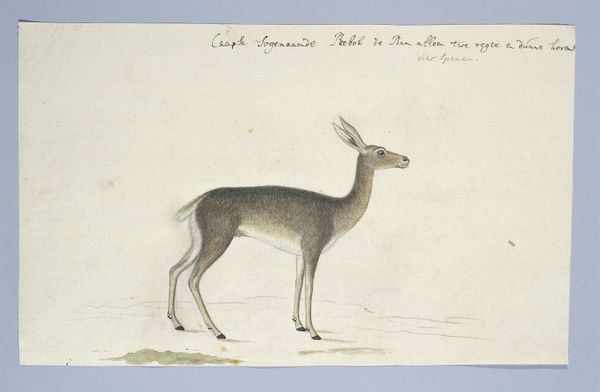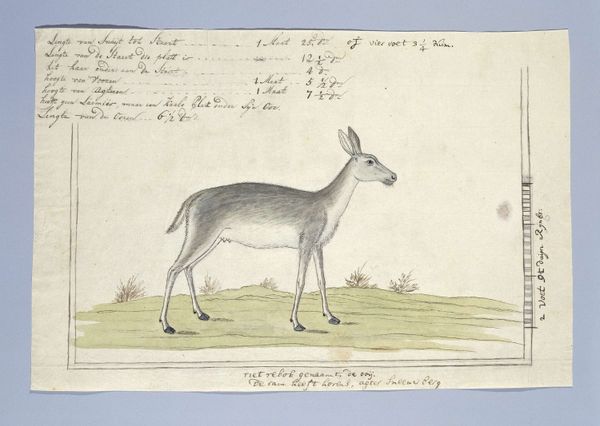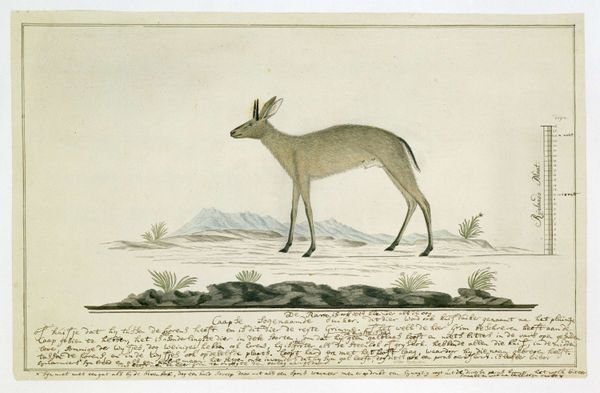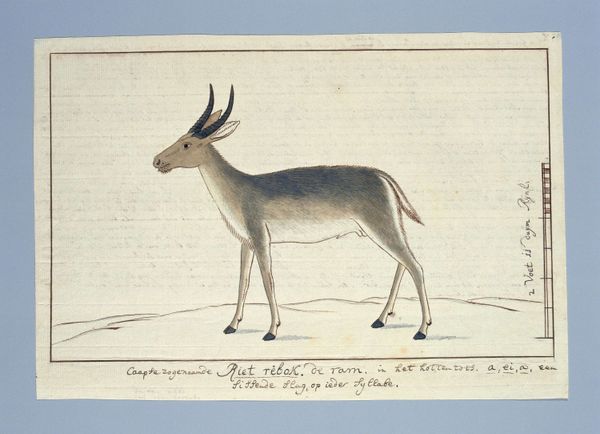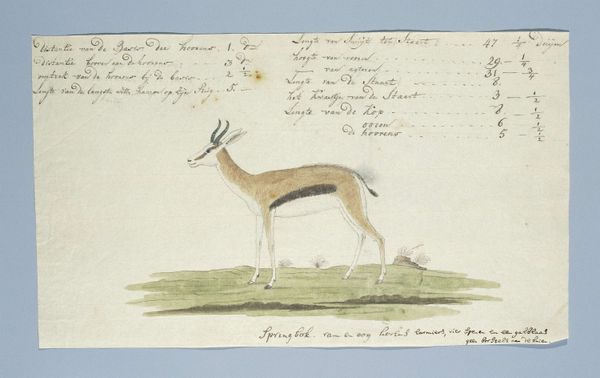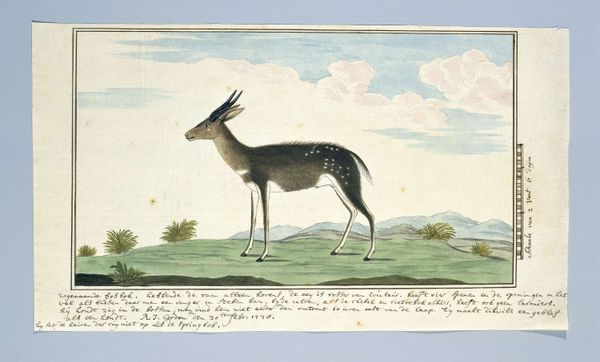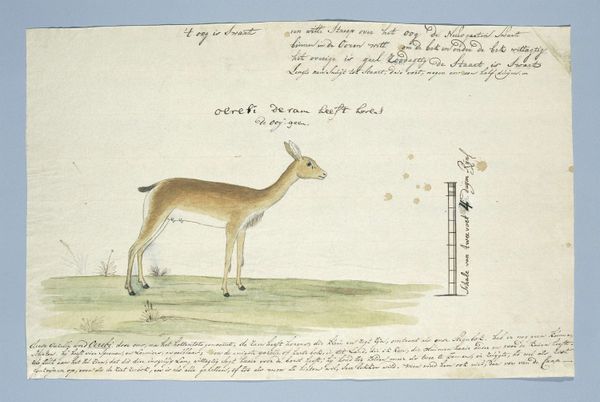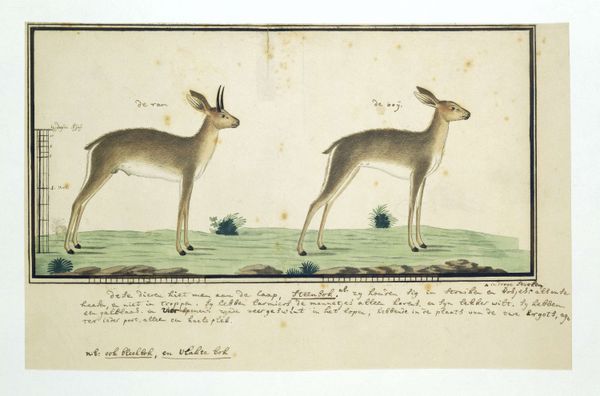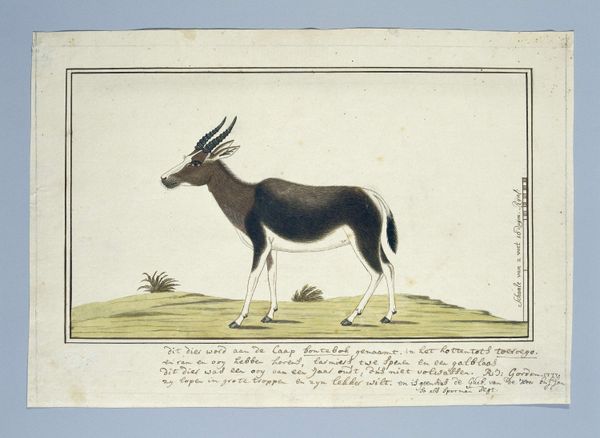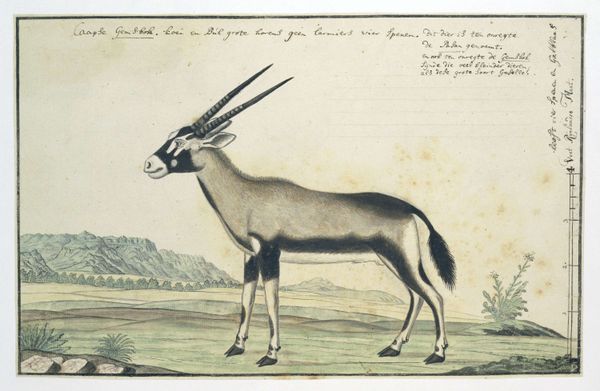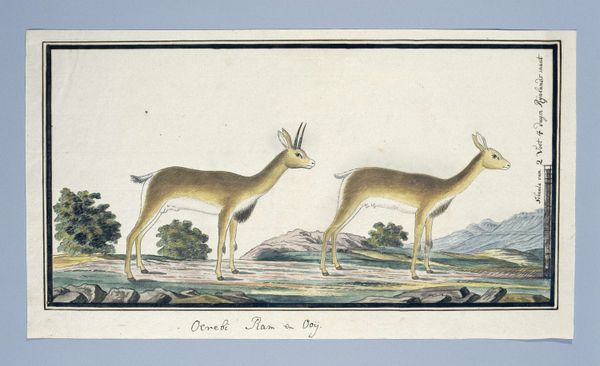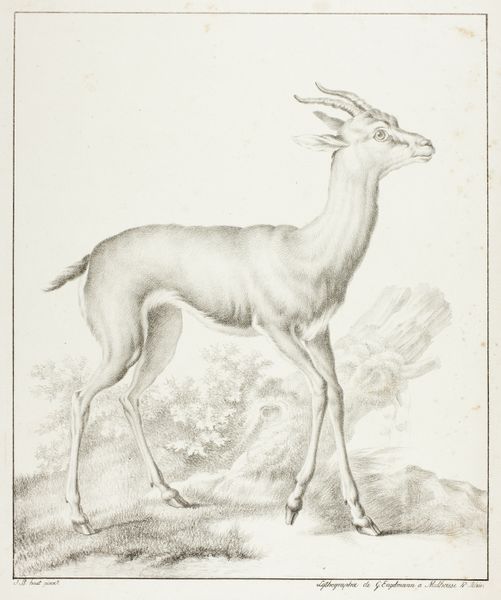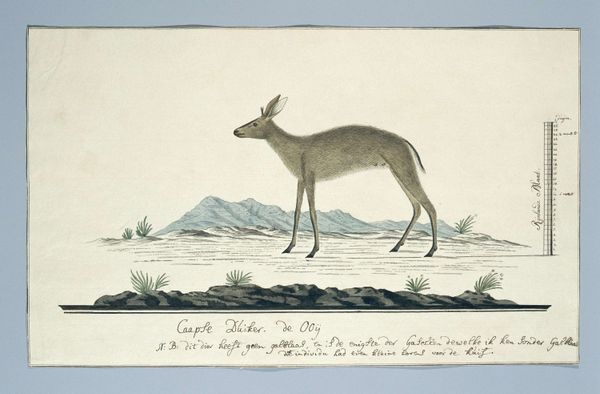
drawing, coloured-pencil
#
drawing
#
coloured-pencil
#
landscape
#
coloured pencil
#
realism
Dimensions: height 660 mm, width 480 mm, height 223 mm, width 410 mm, height mm, width mm
Copyright: Rijks Museum: Open Domain
Editor: Here we have Robert Jacob Gordon's drawing, "Pelea capreolus," or Grey Rhebok, likely created between 1777 and 1786. It's a delicate coloured-pencil drawing, very understated, almost ethereal in its rendering of the animal. It evokes a sense of quiet observation, like catching a glimpse of this creature in its natural habitat. What captures your imagination when you look at it? Curator: Ah, the Grey Rhebok, isn't it exquisite? It transports me, oddly enough, not to the South African landscape it depicts, but into Gordon's mind. Imagine him, meticulously documenting the flora and fauna, perhaps feeling a profound connection with this place… a fleeting, sketched encounter on some scientific field trip. But there's something else here, a shadow of the colonial gaze, the desire to classify and own what he sees. Does it trigger thoughts about our role as viewers of art of other cultures and times? Editor: Definitely! I hadn’t considered that tension, between scientific observation and a kind of… claiming of the landscape. The detachment feels quite modern, almost clinical. But it also humanizes the animal in a very Western way. I also noticed the detailed calculations scribbled onto the side. Curator: Exactly. These field notes – the cross hairs that flatten the Rhebok like an insect for display! He reduces something living into specimens within those lines. Makes you consider how the gaze itself can shape how we see things. What would it mean for Gordon's practice if we removed this notation, or included it into the finished work itself, like an overprint on a painting? What shifts, if any? Editor: That's such an interesting provocation. Suddenly, that calculation shifts into commentary. Like a reminder of the artifice involved in representing nature. It's quite unsettling to ponder how easily documentation can blur into exploitation and classification. Curator: And conversely, can provide an artistic license of truth that reality may or may not grant us! Editor: It completely changes how I see the drawing, moving it from a simple representation to a much more complex statement. Food for thought.
Comments
No comments
Be the first to comment and join the conversation on the ultimate creative platform.
